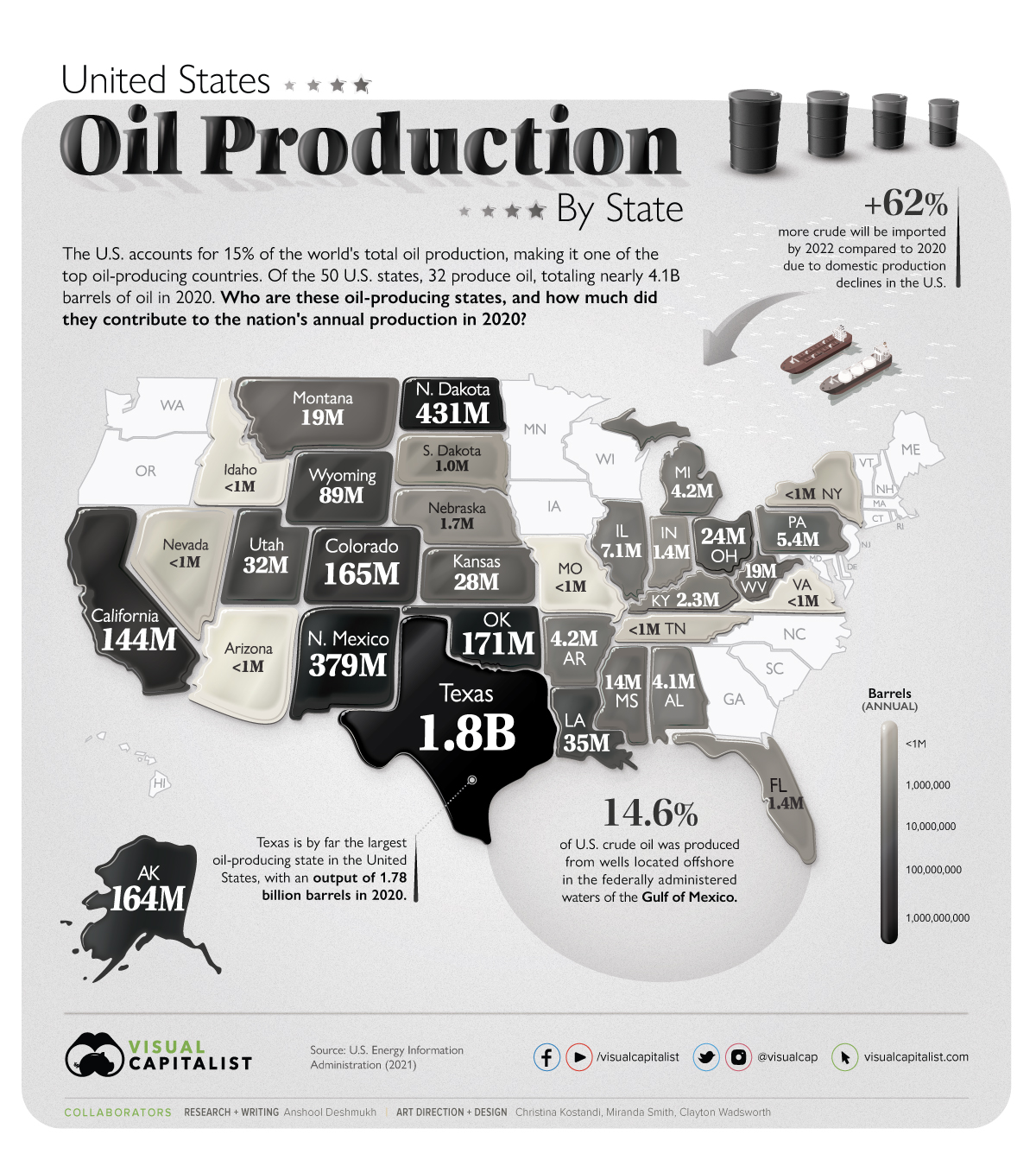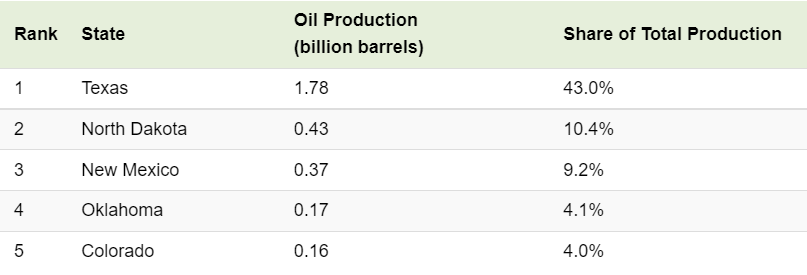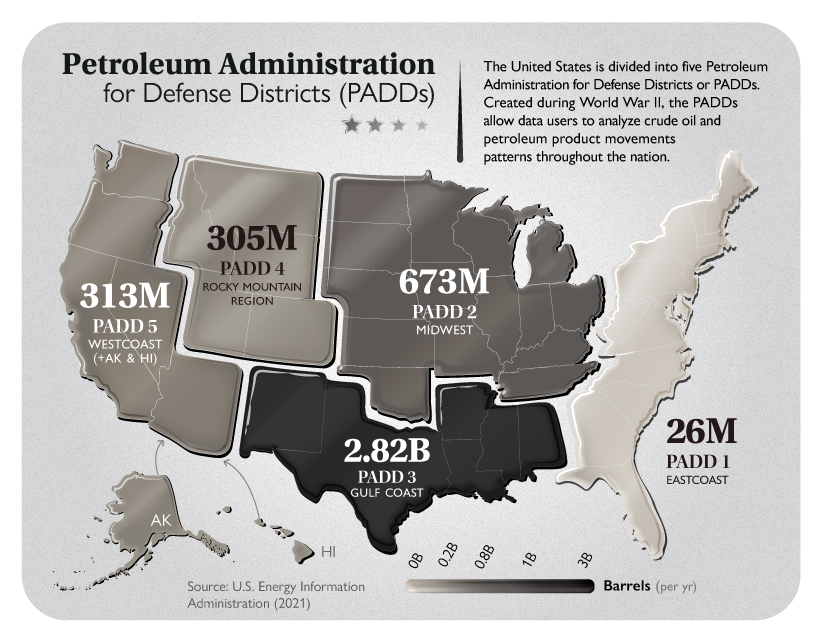Mapped: Visualizing U.S. Oil Production By State
(Click on image to enlarge)

In 2018, the United States became the world’s top crude oil producer. It has strongly held this position ever since.
According to the U.S. Energy Information Administration (EIA), the country accounted for nearly 15% of the world’s total oil production in 2020, churning out close to 13 million barrels of crude oil per day—more than Russia or Saudi Arabia.
Although total U.S. oil production declined between 1985 and 2008, annual production increased nearly every year from 2009 through 2019, reaching the highest amount on record in 2019.
The Dominant Oil Producing States
Impressively, 71% of total U.S. oil production came from just five states. An additional 14.6% came from the Gulf of Mexico, which is a federal jurisdiction.
Here are the five states that produce the largest amount of crude oil:

Rounding the top 10 are states like Alaska, California, Wyoming, Louisiana, and Utah.
Texas is undoubtedly the largest oil-producing state in the United States. In 2020, Texas produced a total of 1.78 billion barrels of oil. Texas is home to the most productive U.S. oil basin, the Permian, routinely accounting for at least 50% of total onshore production. A distant second is North Dakota, which produced about 431.2 million barrels of oil in 2020.
Regional Distribution of U.S. Oil Production
A total of 32 of the 50 U.S. states produce oil. They are divided among five regional divisions for oil production in the U.S., known as the Petroleum Administration for Defense Districts (PADD).
These five regional divisions of the allocation of fuels were established in the U.S. during the Second World War and are still used today for data collection purposes.

Given that Texas is the largest U.S. oil-producing state, PADD 3 (Gulf Coast) is also the largest oil-producing PADD. PADD 3 also includes the federal offshore region in the Gulf of Mexico. There are around 400 operational oil and gas rigs in the country.
Impact of U.S. Oil Production on Employment
Rapid growth in oil production using advanced drilling methods has created high-paying jobs in states like North Dakota and Texas.
Thanks to the rapid development in the Bakken Shale formation, North Dakota boasts the nation’s lowest unemployment rate. The state has also grown personal income and state economic output at a fast rate, due to oil and gas industry growth.
Oil production from the Eagle Ford Shale has transformed a relatively poor region of South Texas into one of the nation’s most significant economic development zones. In fact, due largely to the oil and natural gas industry, the Texas Comptroller estimates that Texas has recovered 100% of the jobs lost during the Great Recession.
Looking to the Future
The U.S. slashed its oil production forecast through next year just as OPEC and its allies begin to roll back their production cuts in the coming months.
U.S. oil output will drop to 11.04 million barrels a day this year, down from a forecasted 11.15 million. This was a result of the deep freeze that shut down the oil industry in Texas. The EIA also lowered its output forecast for 2022 by 100,000 barrels a day.
Despite its forecast for a rise in supply from outside the cartel this year, OPEC said in its report that it is uncertain about the levels of investment expected to determine the non-OPEC supply outlook for the years to come.



